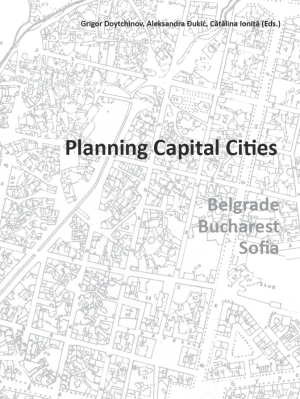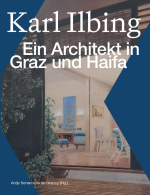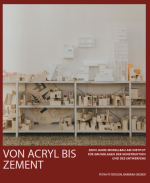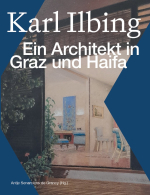Grigor Doytchinov, Aleksandra Đukić, Cătălina Ioniță
The urbanism of Belgrade, Bucharest and Sofia – analogies, influences and differentiations
The understanding of urbanism as the production, processing and application of ideas about the organisation and the design of the urban space leads to the basic question of this publication: Is it possible to detect some uniform ideas in the urbanism of Belgrade, Bucharest and Sofia (further on capitals)? The decision to compare the urbanism of the capitals requires in this sense for some arguments concerning its uniformity as object of research. It means to identify the links between the practiced urbanism and to point out equal ideas as marks of the uniformity. Though urban settlements contain in general ambivalent characteristics and contradictive phenomenon, the differences need to be pointed out in the course of the argumentation too. The assumption that the urbanism of the capitals shows semantic links is based on some frame conditions, offering arguments for a cultural unification: The primary factor for the similarity of the urbanism of the capitals is the regional neighborhood as a factor for co-existence and interferences. The secondary factor is the comparable urban history. Both factors are a precondition for a similar urban shape organization and a cultural heritage in its broad sense. Some historical facts offer convincing arguments for the analogy of the capitals and, respectively, their differentiation from the Central and Western European ones and examination as related objects of research: the Ottoman rule as the pre-modern period, the infiltration of the capitalist economy and the delayed nation building, the European cultural influences, dominating since the 19th century and finally the unstable geopolitical order of the region, which reflects on the principles of urbanism. This review is carried on chronologically and points out the approximation and dissociation of the ideas in the urbanism of the capitals phase-wise.
The largeness and unity of the Ottoman Empire is a decisive condition for the free internal movement of the cultural flows and the repetition of proceedings in organizing the settlements. It is best materialized in the inherited urban patterns and the repeated architectural elements from the ottoman period. The organization of the ottoman settlements follows the principles of the Islamic city. Its basic structural element is the “mahala” as a relative autonomous settlement unit, formed to ethnical and family communities, and the topographic specifics of the location. Another characteristic is the missing public places in the European sense. These marks define the urban patterns of Belgrade, Bucharest and Sofia until the eve of the independence and their nomination as capital cities. The urban patterns from the ottoman period are a heritage, which makes the capitals comparable and distinguishes them from the art of organizing the western European cities. In contrast to the retarded and motionless organisation of the ottoman settlements, the European urbanism practice is progressing very fast to an intellectual discipline in the 19th century. The big step forward is caused by the industrial revolution and the problems of the urban growth, but it cannot be seen separately from the European traditions of settlement organisation, continuously changing and developing over centuries. Its influence on the south-eastern European societies is promoted by their social and cultural change as a result of the infiltration of the capitalist economy, as well as of internal processes of modernisation, starting around 1800, but held up by the still standing ottoman system. The rise of the capitalist economy is the precondition for the formation of the local bourgeoisie, which is no more content with the retarded pre-modern urban milieu. The bigger the gap between the European urbanism and the immobile ottoman settlements organisation, the more the European life style and urbanism do establish themselves as ideals for the young South-Eastern European bourgeoisie.
It is obvious that the heritage from the ottoman past cannot be used as an argument to classify the three capitals definitely and at once into a uniform cultural system. On one side there are the same principles of settlements organisation as a mark of the uniformity. The differences in the geopolitical location between Serbia, Romania and Bulgaria cause on the other side different speeds of the infiltration of the European urban lifestyle. The splitting of the Serbians and Romanians between the Ottoman and the Austro-Hungarian empires provokes direct border crossing interferences, which is possible for the Bulgarians just relatively.
The modernisation of the capitals in the second half of the 19th century is not just the result of the functional and the economic needs, but of a political aspiration. The newly nominated capitals are the symbols of the stormy national prosperity, liberating from the complex of backwardness. The European urbanism comes to application because of the lack of own experience, but it is also an expression of a political wish for equality. The reorganisation of the ottoman street patterns and the elimination of the “mahala”-units reflect the self-confidence of the local bourgeois public. The total reorganisation of Belgrade and Sofia manifests a uniformity of ideas and proceedings concerning their definitive way of acting and speed of realisation. Even if in both cases the urban plans are respecting some of the main historically hold street directions, the attempts can be principally defined as total reconstructions. The interpretation of the Vienna’s ring-road in Sofia can be interpreted as a political declaration too. Despite of the quite different topographic conditions and the consequently different urban patterns, the urbanism of the Belgrade and Sofia shows a semantic uniformity of political and artistic aims. It is the size of Bucharest not allowing that generous reorganisation. But the political wish for swift modernisation and the creation of public spaces for a dynamic bourgeois society is manifested by carrying out of representative boulevards and places through the labyrinth of the pre-modern street patterns. The monumental buildings and sculptures that define the new spaces present the establishing of a new nation on the European scene. The design of the public parks and gardens in the capitals is not a little political. The representative green spaces reflect the systematic spatial concepts of the time and compensate the inhomogeneous urban shape.
The inherited urban patterns from the ottoman period are more or less resistant realities. They confront the implemented European urbanism with specific problems and require for specific solutions. The contrast causes fractured urban shapes which can rather be described as conglomerates of urban and architectural elements, correlating on different ways. In this sense the shape of the capitals cannot be compared with the homogenous European ones, developed in a long-term continuous way. The implementation of the European urbanism is a common external factor for the redesign of the capitals around 1900. The possible scales of intervention are dictated by the different sizes of the cities. In Belgrade and Sofia the phases and the dimensions of implementation are once again very similar: The first step of planning and reorganisation refers the territories inside the former fortification tranches and is consequently confronted with inherited patterns from the ottoman period. Not until after the modernisation of the territory of the ottoman settlement the urbanism reacts on the growing population and starts extending the urban territories. The chosen way to stick the European models with the ottoman heritage creates consequently ambivalences already in the beginning. The ambivalences of the urban shape in Bucharest, where the new boulevards are cut into the inherited “mahala”-patterns leads to distinct contradictions too. The contrast between the grandiose boulevards and the multitude of unregulated secondary streets is extreme. The high speed of the capitals’ changes and the attempt to progress by much too great leaps happen approximately in the same period and cause the specific fractured urban images, which is a mark of the analogy of the urbanism practice too.
The ideological aspects of urbanism emerge with the safeguarding of the unity of nation and state and the establishing of modern capital cities. The growth of the capitals after WW I cause social problems, which cannot be solved with the urban design practice of the 19th century and the corresponding instruments of planning. The shift from the more detailed regulation plan to the structural development plan follows with delay compared to the European practice, but establishes between the two world wars as an effective planning instrument. The lack of own planning traditions is compensated with the acceptance of the cosmopolite ideals of the modernist urbanism. The period is the first “golden age” of Belgrade’s development to a modern metropolis. The birth of the idea of the town extension between Belgrade and Zemun, the later New Belgrade, is as evidence for the generosity and the high level of the urbanism. Romania’s geopolitical extension after WW I is a precondition for the accumulation of financial potential and the growth and modernization of Bucharest. It is the period of the intellectualization of the urbanism. The newly designed boulevards in Bucharest are an expression of a functioning modern society. The implementation of Sofia’s modernist planning in the eve of the WW II is a delayed step for solving the problems resulting from the unprecedented growth, but the contents and the discussions it causes have a fruitful influence on the attitude to urbanism of both professionals and citizens. The use of the green rings and wedges structuring the urban composition of the capitals is an evidence for the acceptance of the modernist methods of planning. The international modernism reaches in the capitals an enormous guiding role and implicates the idea of the spatial organisation as part of the attitude of the mind-set. South-Eastern Europe doesn’t play just the role of a recipient, but participates creatively in the international scene. The history of the Congres International d’Architecture Modern (CIAM) shows the active role of the Yugoslav and Romanian architects in the establishment of the urban and regional planning as scientific disciplines. Another sign of approximation of the ideas in the capitals’ urbanism is the tendency that the discipline is changing from a pure technocratic work to an object of public interest.
The urbanism of the capitals experiences after the WW II contradictive phases of approximation and dissociation, strongly influenced by the geopolitical orientation of the countries. The changing external political linking and the differences of the socialist systems of Yugoslavia, Romania and Bulgaria reflect the principles of planning and design. The Belgrade urbanism and architecture orientates from the very beginning to the modernist pre-war traditions and goes in distance to the postulates of the “socialist realism”. The struggle for modernisation and political representation of the capital of the federated nations, revivals ideas from the revolutionary modernist period of the 1920s: the creation of an ideal, socialist New Belgrade, outside the inherited settlement. The period is a second golden age of the city’s urban development. The urbanism of Bucharest and Sofia is, in opposite, definitely under pressure to orient to the Soviet system of the “socialist realism” ideas and is winning, after a short and nebulous post-war period a strong ideological positioning. The interventions in Bucharest are fortunately fragmented, resp. outside the compact part of the city and do not affect principally its pre-war urban image. Even if the heritage from the “socialist realism” of Sofia is, in comparison to other capitals of Eastern Europe, little too, its precarious location changes the urban core of the city fundamentally in a discontinuous way and fractures the city’s image. The period of the “socialist realism” of Romania and Bulgaria does not last for long. The prompt revival of the modernist ideas in the second half of the 1950s is a sign for the strangeness of the forced principles of the totalitarian urbanism of the Stalinist era. After a period of dissociation of the urbanism of Bucharest and Sofia from the modernist attempts and from the Belgrade’s urban design direction, the orientation to the international ideas of the post-war modernism introduces once more a phase of approximation.
The urbanism of the capitals shows between the late 1950s and the 1970s definitely a similarity of ideas. It is oriented to the rapid realisation of the political aim for a higher living standard, materialised predominantly in the complex housing developments. New Belgrade is gradually taking shape and is internationally acknowledged as an important document of the European modernist urbanism and architecture. The housing complexes in Bucharest and Sofia from that period are an expression of the revival of the rationality of the modernistic urbanism. Some of the earlier examples are on a par with examples in the western world. The design of the ensemble around the City Hall in Bucharest is a unique case of continuous urban development with the means of the modernist design. Some causal connections between the urbanism practiced in the capitals cannot be refused, but the approximation of the ideas is caused primary by the orientation to the international scene and shows its typical characteristics: Firstly, the segregation of the basic functions is carried out with a great deal of consistency. Secondly, the postulate of the maximization of urban functional units, resulting in the typical “coarse grain” urban structures, is also evident. Thirdly, the hierarchy of the urban system corresponds to the modernist urban model. The problems this produces later on are not unknown to the post-war western urbanism too: the mono-functional distribution of the territory encourages the thinking in schemes and the “coarse grain” structure of the urban model gives by necessity birth to the idea of the major structural change. However, the disassociation from this simplified way of thinking and the illusions of the modernist urbanism begins earlier in the West and the change is carried on in a more continuous way. The spirit of voluntarism in the capitals blocks, however, the organic urban development and generates contradictions that didn’t surface until after 1989.
The period of the “late socialism” beginning in the 1970s brings once again different politics of planning the capitals and leads finally to a total dissociation of the ideals. The urbanism of Bucharest goes own ways and forces the total reassembling of the city’s compact urban part not changed too much until that time. The design orientates to the representative patterns of the totalitarian urbanism combined with the post-modern search for a national architectural style. The interventions create clearly defined spaces by homogenous, “scenic” architectural frames and “left-over” structures behind them. The ambitious top-down attempt results in excessively oversized urban spaces and a contradictive urban morphology. The urbanism of Belgrade comes after an unlucky city’s administrative reorganization in the 1970s in an incessant decline. It loses the quality and the generosity of the modernist planning of the 1960s and is limited to smaller scaled, unsystematic interventions. The urbanism of Sofia is characterized by rising contradictions between the un-reflected persistent application of the conventional modernist patterns in the peripheral housing complexes and the policy for preservation of the historical urban parts. The preservation idea is an expression of the postmodern orientation to the genius loci and has indirectly a positive effect on the urbanism. The decision to protect the historic ensembles and to develop pedestrian zones brings the inherited urban patterns and building structures in the light of the public and the legislative power. On this way Sofia keeps pace with international tendencies. The preservation policy underlines differences and gives the urbanism a multifarious image. The delayed revival of totalitarian design patterns since the 1970s concerns single architectural objects and doesn’t influence too much Sofia’s urbanism in that time.
The fragmentation of the urbanism systems, the professional dis-orientation and the accompanying global influences meet the planning theory and practice in the capitals in 1989 unprepared. In fact, the crises of the urbanism in the capitals roots back to the 1970s and goes conform with the global crises of the modernism, but is strengthen by the rising gap between the fast extensive growth with its low urban milieu quality and the real expectations of the population. The socialist main stream urbanism limits the possibilities for individual and specifically local expressions. Contrary to Western Europe, where individual and local positioning is able to develop, the standing out of the ideology against the reality offers little chances to individual characteristics. The dialectic succession of emergence and decay is generally typical for every cultural main-stream, but in the capitals it has specific dimensions. The decay of the modernist urbanism isn’t confronted here with continuously rising critics and experimental searches like in Western Europe and the break is therefore very categorical. The prompt decline of the socialist systems in 1989 distracts the orientation of the experts, because the former ideas are not replaced continuously by new ones and situate the actors in the chaos of the diffuse, global value imaginations of the post-modern time.
The efficient modernization impulses until the 1970s, which seemed to be buried under the ash of the late socialism systems and their ambitions, revive after the geopolitical changes and offer the societies a hopeful expectation of a pluralistic experience. The comparable social and political changes in the capitals create similar circumstances and provoke consequently comparable transformations of the urban shapes. The urbanism of the capitals follows since the 1990s the way of plurality and there is a considerable degree of conformity or coincidence with the global tendencies. The global, external influences belong in general to the nature of urbanism and are clearly traceable in the history and deeply coded in the attitude of mind of South-Eastern Europe. The specifics result here once again from the speed of change. Escaping abruptly from the unhappy alliance between the deductive modernist thinking and the voluntarism of the communist ideology, the capitals are already heading in the current urban transformations for a new contradiction: on the one hand, the hurried attempt to establish simultaneity with the global urban tendencies, and on the other the return to the historically past and buried, but seemingly sane pre-war world. The contradictive attitude creates disturbing contrasts and strengthens the fractured image of the capitals. The image is strengthened by the exhaustion of the public institutions and the pressure of the investor’s planning, typical for the neoliberal political spirit. The contradictions seem today inevitable and it seems that in the near future the development of the capitals cannot be based on the concept of a balanced quality, because the ambivalences are part of their identity. But the development of the last two centuries shows that the capitals are able to combine numerous contradictive expressions, resulting from various stages of syntheses. In the same time they so accumulate effective integration strategies, making them capable of development and viable.







